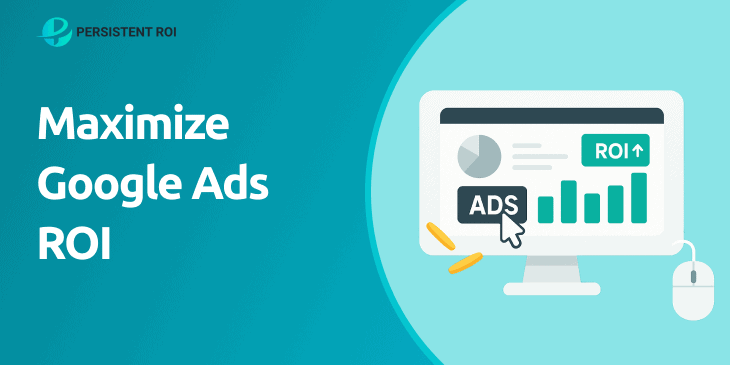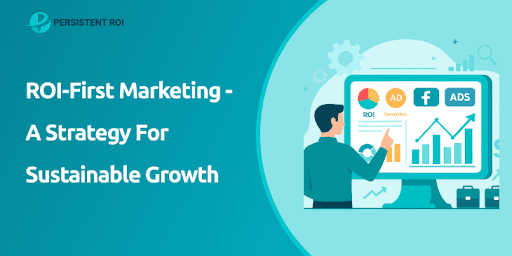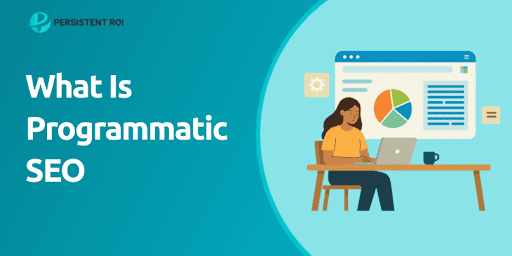When you spend money on Google Ads, you want to see something in return, right? That “something” is called ROI, or return on investment. It tells you if your ads are actually helping your business grow—or just costing you money.
In this guide, we’ll walk you through how to measure your Google Ads ROI, what a good number looks like, and what steps you can take to make that number go up.
Regardless if you’re just starting out or looking for ways to improve your results, this post will help you get more from your Google Ads!
What Is ROI In Google Ads?
ROI, or return on investment, shows you how much money you make compared to how much you spend. When it comes to Google Ads, ROI helps you see if your ad campaigns are worth it.
Here’s a simple way to think about it:
ROI = (Revenue – Cost) ÷ Cost × 100
So, if you spend $1,000 on ads and earn $2,000 in sales, your ROI is 100%. That means you doubled your money. Not bad!
But now you might ask:
So, what is a good ROI for Google Ads?
It depends on your industry and your goals, but a typical ROI ranges between 200% and 800%. That means for every $1 you spend, you should earn between $2 and $8.
In fact, according to industry benchmarks, the average return across all industries on Google Ads is about 200%—meaning many businesses earn around $2 for every $1 spent. That’s just the baseline, though—stronger campaigns often do much better.
Some businesses do even better—especially with the help of expert management. If you want to increase ROI with expert Google Ads management, you’ll likely spot more chances to save money and earn more from each click.
Also, keep in mind: ROI is not the same as ROAS (Return on Ad Spend). ROAS only looks at how much revenue you earn per dollar spent on ads, while ROI also considers other costs like shipping, staff, or product costs.
The Foundations of Tracking and Measuring ROI Accurately
Before you try to improve ROI, you need to track it the right way. If your data isn’t correct, your decisions won’t be either.
Here are the basics to get you set up:
1. Set Up Conversion Tracking
This is the most important step.
Google Ads needs to know when someone does something valuable—like buying a product, filling out a form, or calling your business. You can set this up using:
- Google Ads Conversion Tracking
- Google Analytics (GA4) linked to Google Ads
Make sure the action you’re tracking is tied to real value. For example, if you sell shoes, track sales, not just clicks.
2. Know the Value of Each Conversion
How much is a lead or sale worth to you? This helps you understand what a conversion is really bringing in.
For example:
- If you sell a $50 product and your profit is $20, that’s your true value.
- If a customer signs up and later becomes a buyer, track the average value over time.
When you’re clear on the real value, it becomes easier to decide how to optimize your Google Ads campaigns for better ROI.
3. Use the Right Attribution Model
Attribution tells you which ads (or clicks) get credit for conversions. Google gives several models to choose from:
- Last click (default, but not always best)
- Data-driven (uses AI to decide)
- Position-based, and more
Choosing the right model gives you a clearer picture of what’s working.
💡 Tip: Start with Google’s data-driven attribution model if you’re unsure which one to use. It uses machine learning to give credit to the parts of your ad journey that actually drive conversions—and works well once you have enough conversion data.
4. Separate Branded vs. Non-Branded Campaigns
If people are searching your business name, they already know you. These branded searches often have a much higher ROI. But that doesn’t mean your ads are doing all the work.
Break these out in reporting so you don’t accidentally think all your campaigns are performing better than they are.
Want smarter ROI from your Google Ads? Persistent ROI can help.
How to Increase Google Ads ROI
Once you understand how to track ROI, the next step is to make it better. The good news is, there are many small steps you can take to get more value from your ads—without guessing or wasting money.
Below is a breakdown of simple steps and strategies you can start using right away.
1. Choose the Right Keywords
Keywords are the words people type into Google when they’re searching. Picking the right ones means your ads show up for people who are ready to buy.
- Use specific keywords, not just broad ones.
For example, instead of “shoes,” try “women’s running shoes size 8.” - Add negative keywords to block searches that don’t matter.
If you sell high-end gear, you might want to block words like “cheap” or “free.”
This helps lower wasted clicks and improves your Google Ads ROI.
2. Write Better Ads That Speak to Real People
Your ad is the first thing a person sees. Make it clear, helpful, and direct.
Here’s what to do:
- Include the main keyword in the headline.
- Mention what makes your product or service special.
- Add a call to action, like “Buy now” or “Get your free quote.”
The better your ad fits what the searcher wants, the more likely they are to click and convert.
3. Improve Your Landing Pages
The landing page is where people go after clicking your ad. If it’s slow, confusing, or hard to use on a phone, people will leave.
To make it better:
- Keep the page fast and mobile-friendly.
- Match your page content to your ad’s promise.
- Make the action clear—like a big “Book Now” or “Start Free Trial” button.
Improved landing pages can help you get more conversions from the same ad spend, which leads to a higher google ads roas.
4. Use Smart Bidding Strategies
Google Ads offers tools that adjust your bids automatically based on what’s likely to convert. These are called Smart Bidding strategies.
Some popular options include:
- Maximize conversions: Good if you want as many leads or sales as possible.
- Target ROAS: A smart way to aim for a specific return on ad spend.
Choosing the right bidding method is a big part of learning how to increase Google Ads ROI over time.
5. Test, Tweak, Repeat
Now, how can I optimize my google ads campaigns for better ROI, you ask? Don’t just guess what works—test it.
Try different:
- Headlines and ad descriptions
- Landing page designs
- Calls to action
Run A/B tests (Google Ads has tools for this) and keep the versions that perform best.
Not sure what’s working in your campaigns? Persistent RO can break it down and build it up.
6. Use Audience Targeting
Not everyone is your customer. Use audience settings to focus your ads on the people most likely to buy.
You can target based on:
- Age, location, or interests
- Past visitors to your site (called remarketing)
- In-market audiences—people currently shopping for what you offer
This helps you spend less on people who aren’t likely to convert and more on those who are, which is key in any ROI-first marketing approach.
7. Work with Experts When It Makes Sense
Managing Google Ads well takes time, testing, and know-how. If you want to grow faster or avoid mistakes, it can help to increase ROI with expert Google Ads management.
Professionals can spot small issues that cost you money or find new growth areas you might miss. Think of it like adding a guide who knows the trail.
Remember, even if you know what is a good ROI for Google Ads, it takes steady work to reach and beat that number.
Conclusion
Measuring and improving your Google Ads ROI doesn’t have to feel confusing. With the right setup, clear goals, and some smart planning, you’ll be able to make better choices and see real results. And if you’re wondering how to increase Google Ads ROI even further, remember: expert help can make a big difference.
Want support that puts ROI first? Talk to the team at Persistent ROI—we’re here to help you grow smarter.






